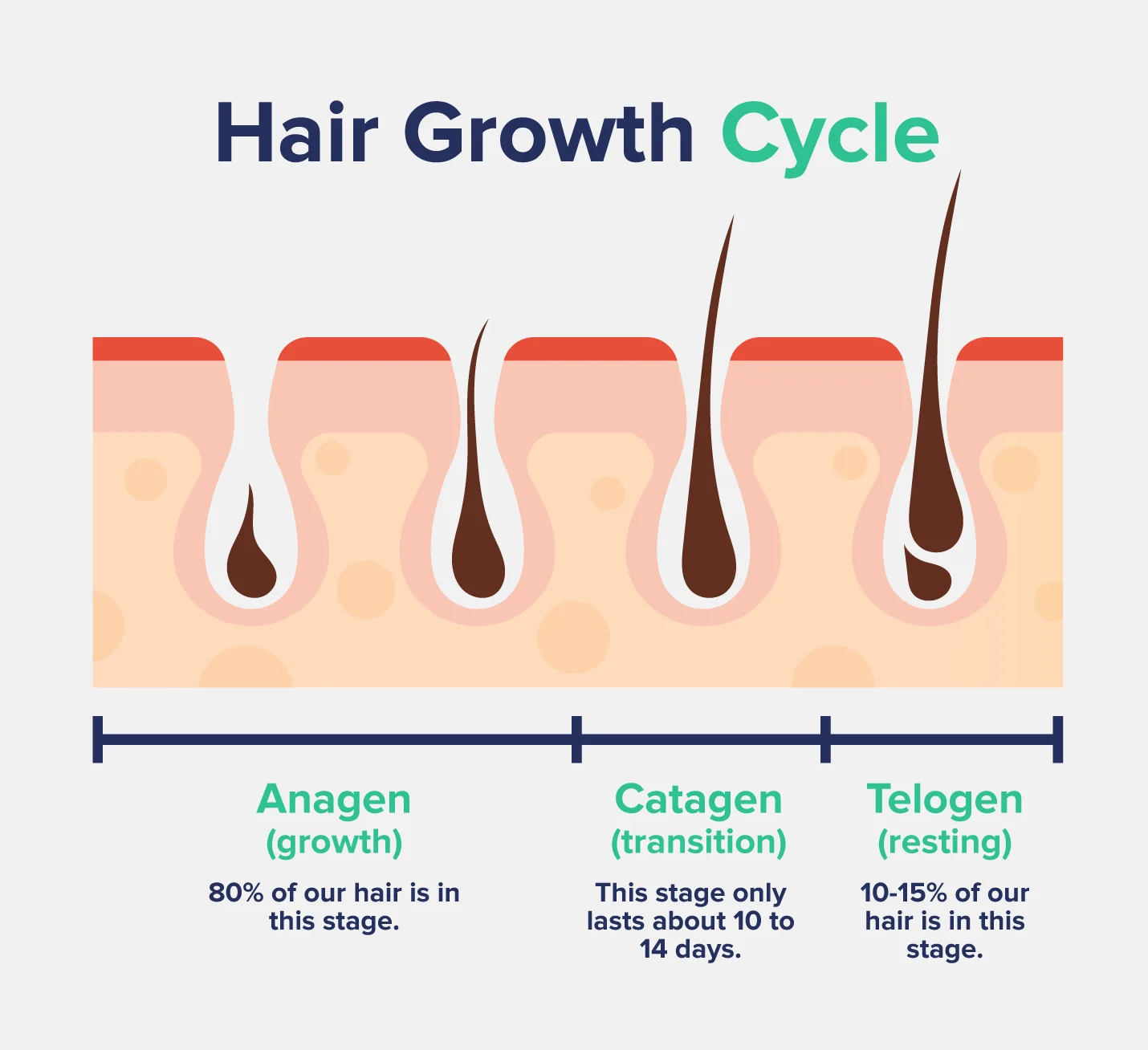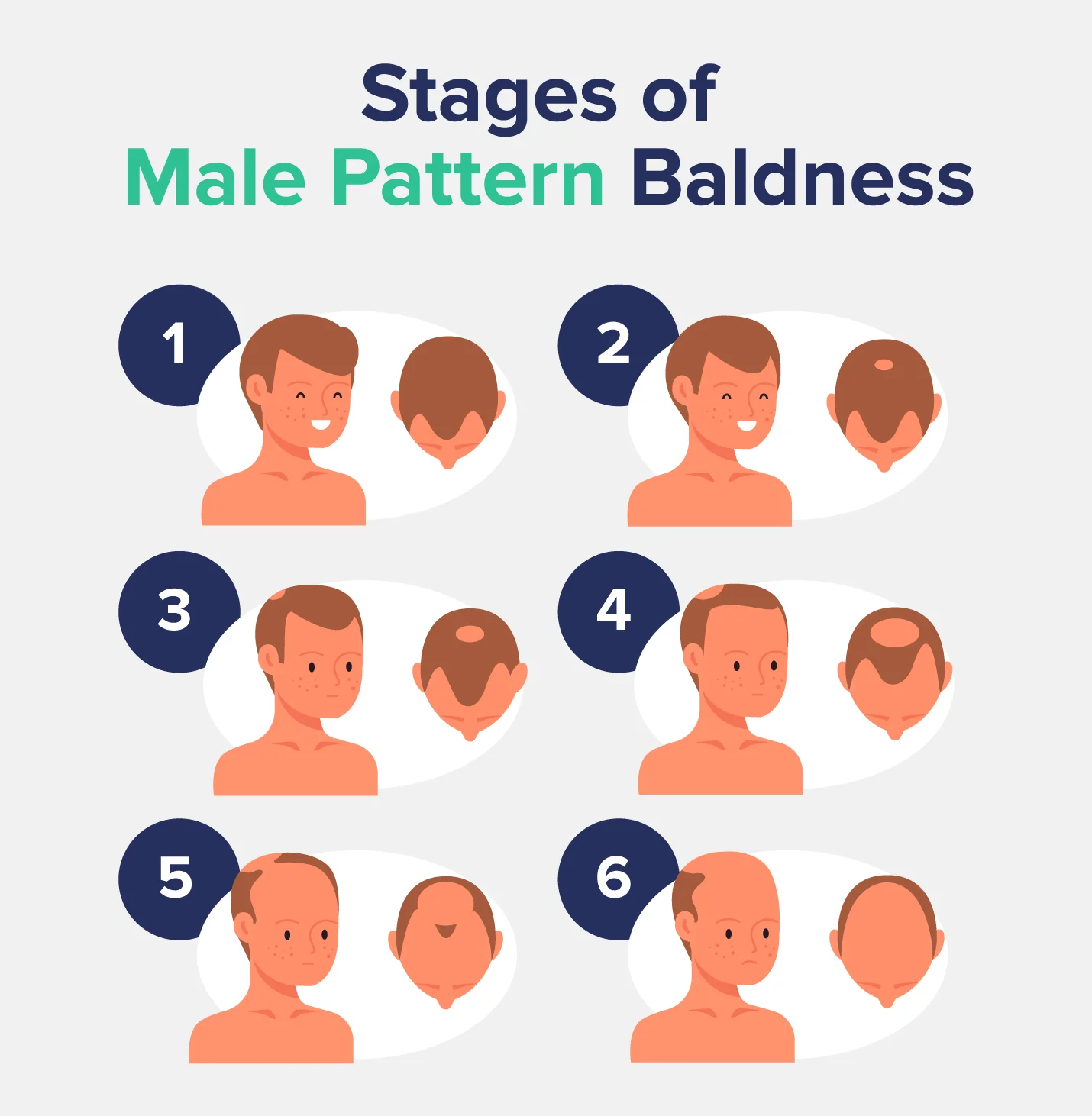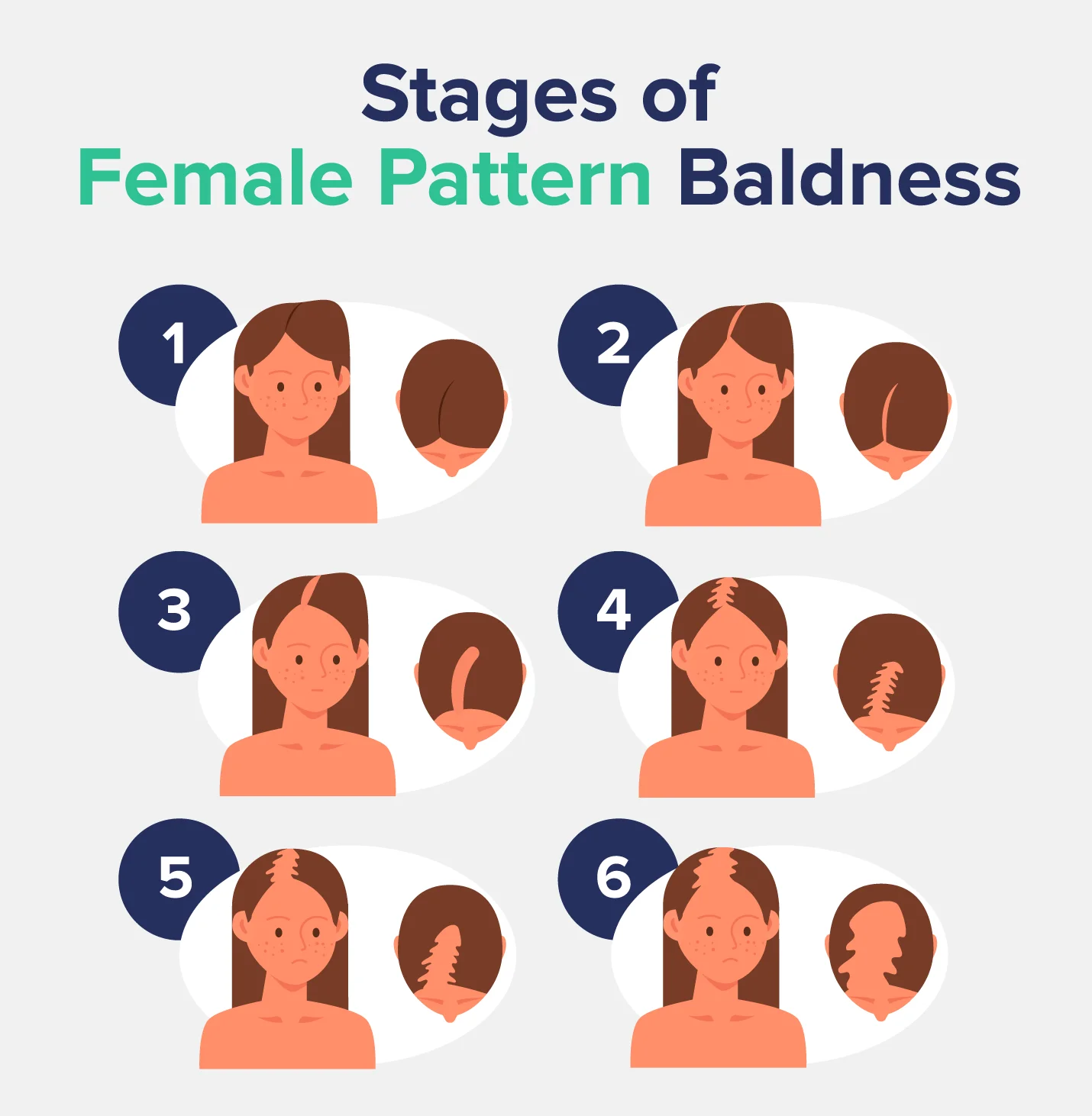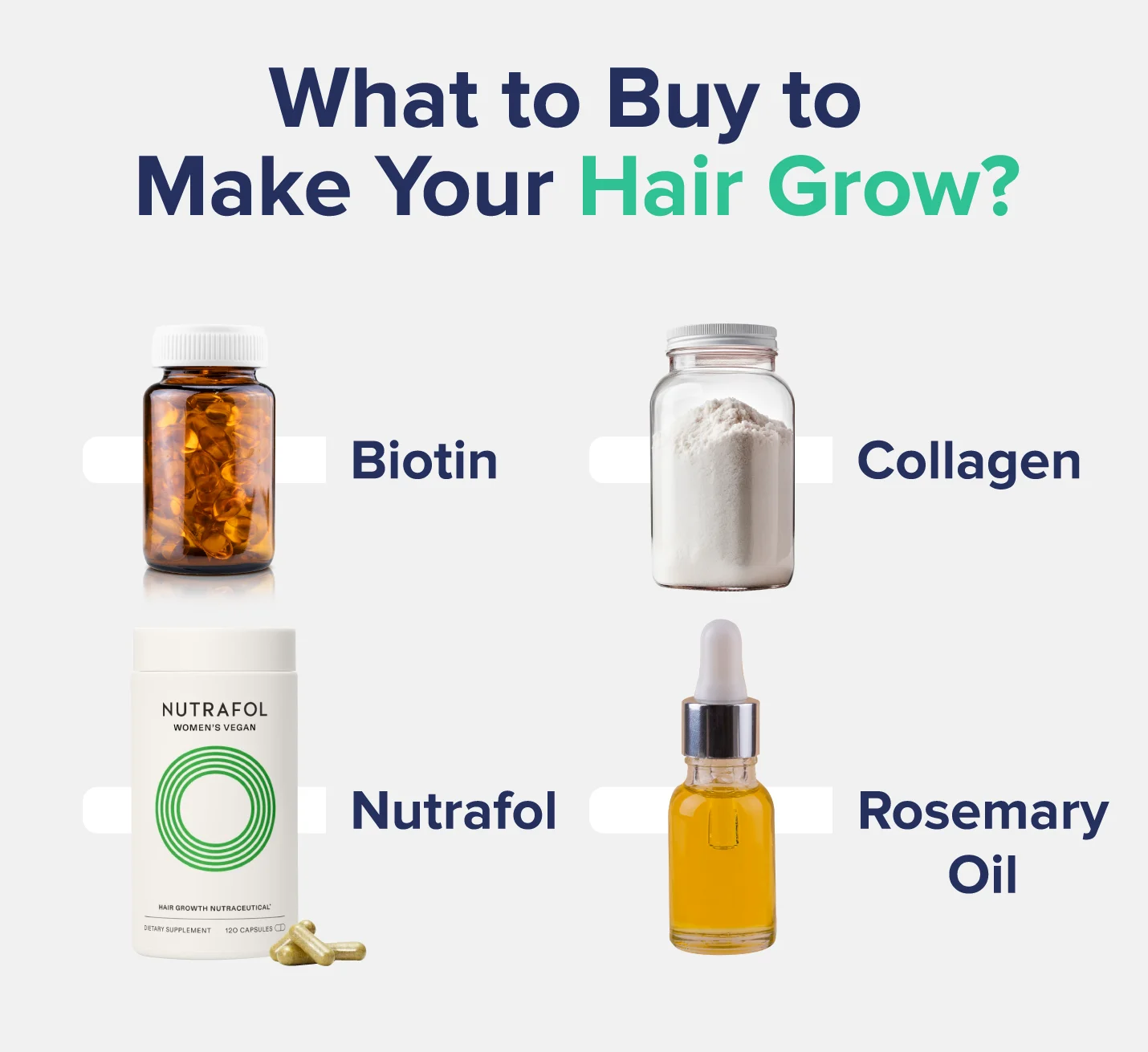Try our favorite, clean protein powder: See our top pick →
Try our favorite, clean protein powder: See our top pick →
This post contains links through which we may earn a small commission should you make a purchase from a brand. This in no way affects our ability to objectively critique the products and brands we review.
Evidence Based Research To fulfill our commitment to bringing our audience accurate and insightful content, our expert writers and medical reviewers rely on carefully curated research.
Read Our Editorial Policy
Too many of us are familiar with the overwhelming panic that can set in after a bad haircut.
While friends and loved ones may try to comfort you with the old “It’ll grow back!” comment, that’s probably the last thing you want to hear.
Yes, hair does indeed take time to grow back, but probably not as long as you think. As annoying as it can be to hear, those people are correct, and your bad haircut won’t be this way forever.
In this article, we’ll cover how fast hair typically grows, the hair growth cycle, and what might slow down the growth process.
We’ll also give you some tips on how to improve your hair health that may help add inches to your lengths more quickly if you really can’t live with that bad ‘do.
On average, healthy human hair grows at a rate of about half an inch per month.
Some people may grow hair faster or slower than others, but typically, the rate of your hair growth depends on genetics, hair follicle health, and your overall well-being.
However, regardless of whether you have curly hair or straight hair, thick or fine, most people’s hair grows at the same rate.
If you’re trying to promote hair growth, understanding the hair growth cycle will give you some perspective on why taking care of our bodies and minds is often the first step to growing long, luscious hair.
All hair goes through the same three steps of the hair cycle.
Anagen phase (growth): This is the phase when the hair follicle is actively growing and producing hair fibers. This growing phase can last up to seven years. 80% of our hair is in this stage.
Catagen phase (transition): In this phase the hair follicle becomes dormant and is about to enter the final resting stage. This stage only lasts about 10 to 14 days.
Telogen phase (resting): At this point, the hair is no longer connected to the follicle and is sitting on the scalp, waiting to shed as the hair follicle re-enters the anagen phase. 10-15% of our hair is in this stage.

Some parts of our bodies will have different rates at which the hair grows, such as the eyelashes, which have a short cycle (a few weeks). On the other hand, the hair on our head or face can go through a much longer cycle lasting for years.
Many factors can affect hair health and, subsequently, the rate of your hair growth.
If there is a big change in your health or how you’re treating your hair, you may notice some changes to your hair health.
If you’re noticing significant changes to your hair’s appearance, such as hair thinning, bald patches, or increased hair shedding to the point where you’re finding more hair strands on your pillow or in your shower drain than normal, it might be time to take an inventory of your health.
Along with these signs of increased hair loss, your hair growth may also be impacted.
Due to genetic factors, male pattern baldness (also known as androgenic alopecia) affects nearly 80% of men by the age of 80.

While it most commonly occurs in men with male pattern baldness, women can also experience female pattern baldness.
Female pattern baldness can also appear as hairline thinning and bald patches but typically presents as overall thinning.

The cause of male and female pattern hair loss is most often due to increased levels of DHT (Dihydrotestosterone), a hormone that influences hair growth in both men and women, and prostate growth in males.
Additionally, as we age, our hair grows slower, so it’s natural to see some thinning of your hair as you age.
Nutritional deficiencies due to an unbalanced diet or highly restrictive eating habits can lead to a slowdown in the growth of hair.
This is because our body requires certain nutrients like vitamin D, vitamin C, and biotin, which primarily come from our diet, to grow hair.
If you have an iron or biotin deficiency, this will also greatly impact your hair growth and health.
This can not only lead to a slower growth rate but it can also cause hair to become more brittle, leading to thinning of the hair.
Low protein intake can also slow hair growth, so getting enough protein in your diet is incredibly important and crucial to an overall healthy lifestyle.
Just like your pets, a change in climate can also impact the growth of your hair and how quickly it falls out.
Cold temperatures can put stress on the hair follicles and lead to a slower rate of hair growth.
Hair may also fall out more quickly during the summer months due to warmer temperatures, UV exposure, and dehydration.
If you live in a highly populated area, you may also notice increased hair loss due to environmental pollutants and hard water.
Experiencing stressful or traumatic events such as giving birth, having major surgery, experiencing a job loss, or losing a loved one can lead to decreased hair growth due to increases in cortisol levels.
Increased cortisol can cause hair to go into what’s called “telogen effluvium,” where many hairs go into the resting stage and fall out.
When hair enters telogen effluvium, it can take up to six to nine months for your hair to return to normal.
Certain health conditions like thyroid disease, lupus, hormone imbalances, and even fungal infections of the scalp can lead to decreased hair growth and hair loss.
One of the most well-known diseases that causes hair loss is alopecia areata.
This is an auto-immune disorder where the immune system attacks hair follicles, causing hair to fall out and stop growing entirely.
In some cases, this can be brought on by severe stress and can affect either the scalp or the entire body.
While heat styling and excessive, damaging hair treatments won’t necessarily slow down hair growth, they can create the illusion that your hair isn’t growing very quickly.
This is because excessive use of heated styling tools like flat irons and curling irons can cause the hair to become damaged, leading to breakage and thinner hair.
Additionally, wearing tight hairstyles (tight ponytails, braids, or even the trendy slicked-back bun) too frequently, as well as extensions and weaves, can cause a type of hair loss called traction alopecia.
Lastly, harsh treatments with chemicals such as bleach and perming solutions can weaken hair fibers and damage hair, causing breakage and increased hair loss.
If you think your hair is growing more slowly than normal, there are some ways you may be able to get your hair to grow more quickly.
For those who are already at a normal hair growth rate, you may not find that these products do much to increase your hair’s length, but they could improve the health of your hair.
Since the hair fiber itself is not a living part of our bodies, we need to approach the health and improved growth of our hair at the scalp and hair follicle level.
When we have a healthy scalp that is getting consistent blood flow and doesn’t have a build-up of products blocking hair follicles, our hair can grow more quickly and easily.
As of late, this information has proliferated more widely on social media, causing the popularity of scalp treatments, scalp scrubs, and scalp massagers to skyrocket.
These products can scrub away dead cells, promote blood flow, and remove product build-up from all the leave-in products and dry shampoos we might be using in between washes.
If you’re taking care of your scalp but not your diet, you might be putting the cart before the horse.
Keeping your hair healthy isn’t a one-and-done process––you also need to feed your body with the right nutrients to get the best results.
While it’s easier said than done, to keep your magnificent mane growing and in perfect condition, you need to try and find a way to remove or reduce stress in your life.
If you’re stuck with the source of your stress, finding ways to cope with the situation, person, or thing causing it is the next best thing.
One can do that through therapy, journaling, meditation, breathing exercises, physical exercise, or finding another avenue of stress relief through a hobby.
Making these lifestyle changes won’t just improve your hair health but your overall health, too.
There are hundreds––if not thousands––of over-the-counter pills, lotions, and potions on the market that one can take to try and stimulate hair follicles to grow more quickly.

There is also increasing clinical research being done on microneedling and PRP (platelet-rich plasma) injections, indicating potential for its use in treating androgenic alopecia.
If you’ve tried over-the-counter treatments and you’re still not seeing any improvements in your hair growth, you might try speaking with your doctor about your options.
Two very common medications are prescribed for androgenic alopecia––minoxidil and finasteride.
Minoxidil is a topical solution applied to the scalp that can encourage hair growth and slow down hair loss.
Finasteride blocks the conversion of testosterone into DHT. Finasteride is one of the most effective treatments for androgenic alopecia.
However, it can cause some significant side effects (decreased libido, erectile dysfunction, depression), and you may have to take it for many years.
To see if your slow hair growth or hair loss would benefit from one of these prescriptions, you’ll have to schedule an appointment with a board-certified dermatologist.
If you are experiencing completely stunted hair growth, hair thinning, or total hair loss and you’ve tried all the previous methods with no appreciable results, surgery could be another option for you.
In the last decade or so, the popularity of hair follicle transplants has surged as a more rapid, natural-looking, and permanent treatment for hair loss.
Hair transplant surgery works by taking healthy hair-producing follicles from other areas of your scalp and implanting them (usually) along the hairline or wherever you are experiencing hair loss.
While this surgery may result in quicker and more permanent results than if you were to take over-the-counter treatments or prescription medications, it will still take a year for your scalp to heal and the hair to fully grow in.
You may also need touch-ups in case some of the follicles fall out, and the procedure can be costly depending on where you go.
Many factors influence hair growth, and you may be able to improve the rate your hair grows by improving your diet, reducing stress, and taking proper care of your scalp. However, a large part of what influences hair growth comes down to genetics.
Some people may be able to achieve faster hair growth––even up to an inch per month––under the right conditions. However, most people will probably not be able to grow their hair this fast.
If you are experiencing slower hair growth due to nutritional deficiencies––such as a biotin deficiency––it’s possible to speed up your hair growth by improving your diet or taking dietary supplements. However, if your hair is already growing at a normal rate and you do not experience any excess hair shedding, you probably won’t be able to speed up your growth that much.
At an average rate of half an inch per month, it would take about six months to grow your hair three inches.
Foods that can help your hair grow will be rich in collagen, biotin, and essential nutrients such as vitamin C, vitamin D, and other B vitamins.
• Eggs: high in protein and biotin
• Berries and citrus fruits: high in vitamin C, which can promote collagen production
• Dark leafy greens: high in iron and other essential nutrients
• Almonds, avocados, and fatty fish: these foods contain healthy fats and other vital nutrients that can support hair growth
Subscribe now and never miss anything about the topics important to you and your health.